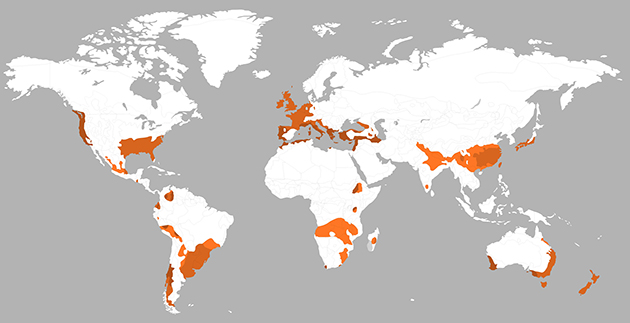
PROJECT INFO
Building type:
Educational
Year:
2017
Project Status:
Built
Gross Area:
7400 Sqm
Certificates:
BREEAM New Construction 2011 (UK) Outstanding
Climatic zone:
Temperate
MY LAST SEEN PROJECTS


.jpg)

PROJECT DESCRIPTION
Make Architects has completed its fifth project for the University of Oxford, a new medical research building dedicated to complex, analytical research into the causes, consequences, prevention and treatment of disease.
The Big Data Institute is the first UK research building to utilise a ‘labyrinth’ as part of a passive cooling strategy and has been awarded BREEAM Outstanding.
Housing 552 people, the 7,500m2 building has been specifically designed to assist with the storage, analysis and processing of enormous quantities of data with the aim of providing new insights into illnesses and treatments worldwide. A vast server room provides enough computing power for 600 trillion computations per second.
Four levels of office space are arranged around a top-lit atrium. Each floor has a mix of both perimeter cellular offices and generous open-plan spaces interspersed with high-quality social and breakout areas to promote different methods of working and collaboration.
The building employs a passive design, using the principles of assisted natural ventilation wherever possible. A 600m subterranean labyrinth is located beneath the lower ground floor that draws in air through the atrium light well and uses the thermal mass of the concrete – which is a relatively constant 12°C – to regulate temperatures in summer and winter before circulating it to the main rooftop plant room. This air is then distributed via floor plenums and extracted via the atrium using the stack effect. The BDI is one of only a handful of buildings in the UK that use a labyrinth for cooling, and is the first UK research building to use one.
Other sustainable features of the building include a combined heat and power (CHP) plant, photovoltaic (PV) panels, sedum roof, sustainable urban drainage system, and drainage attenuation.
AWARDS
2015 Building Energy Efficiency Awards Shortlisted
SUSTAINABILITY FEATURES
Hybrid ventilation
Innovative cooling system
Passive Solar
High efficient façade
Photovoltaics
Water-saving sanitary appliances
High efficient lighting
Daylight sensors
Sustainable Urban Drainage Systems
Green or brown roofs
Daylighting maximised
Energy Star equipment & appliances
SUSTAINABILITY STRATEGY
The Big Data Institute ( BDI) is a University of Oxford building that utilises innovative systems to passively reduce energy consumption. The building has been designed as a naturally ventilated building utilising a thermal labyrinth to provide summer passive cooling and winter passive heating.
The building’s architectural form has been designed to maximise cross ventilation to help draw air through the building, utilising controlled Atrium ventilators to maximise free air movement through the building where ever possible.
The building consists of departmental office spaces and a data centre for processing “Big Data”, which is fundamental in the departments operations. BDI’s integrated control system maximises the passive measures designed into the building and optimally use a number of energy efficient technologies.
The BDI is an innovative building utilising an underground thermal labyrinth which uses the stable ground temperature to precondition the air before it enters the air handling units. This significantly reduces the mechanical energy that is require to condition the air. When additional mechanical energy is required, systems such as Combined Heat and Power (CHP), Absorption chillers (heat not electric driven chillers), dry air coolers (very high COP), and Photovoltaics (PV) are orchestrated to provide maximal efficiency returns.
The data centre utilises condenser water based active rear door computer cabinet cooling systems. This provides free cooling for approximately 75% of the year without the need for mechanical cooling. The cooling system also diverts the waste heat from the Data centre in winter periods which is then utilised as the primary heat source for the offices’ ventilation systems.
ENERGY DATA
Energy consumption:
N/A (N/A )
Consumption type:
Annual carbon footprint:
N/A (N/A )
Climate zone:
Temperate
Min. temperature =
N/A
Max temperature =
N/A
RH =
N/A

CLIENT
Client:
University of Oxford
DESIGNERS
Architect:
CONSULTANTS
Building services engineer:
Long and Partners
Cost consultant:
Arcadis
Green certification consultant:
Other:
CPD
Structural Engineer:
Peter Brett Associates
CONTRACTORS
Contractor:
Mace
OTHER PROJECTS BY TEAM
SIMILAR PROJECTS


.jpg)

Chia, Cundinamarca, Colombia | 2013

49 Bow Rd, London E3 2AD, UK | 2013
.jpg)
.jpg)
Sydney NSW, Australia | 2015
.jpg)
.jpg)




Edinburgh Centre for Carbon Innovation, Edinburgh EH8, UK | 2013


Via Renzo Ildebrando Bocchi, 33, 43126 Parma PR, Italia | 2012

Heidelberglaan 8, 3584 CS Utrecht, Netherlands | 2015
.jpg)




Corso Venezia, 37047 San Bonifacio VR, Italy | 2012



Via Giuseppe Mazzini, 37047 San Bonifacio VR, Italia | 2012